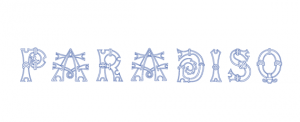PARADISO: PERFORMING THE RENAISSANCE
Presented by the Performa Institute and NYU Steinhardt School of Culture, Education, and Human Development
Friday, April 24, 1:00–5:30 p.m.
Saturday, April 25, 1:00–5:30 p.m.
NYU Steinhardt School of Culture, Education, and Human Development Einstein Auditorium, Barney Building, 34 Stuyvesant Street, New York City
Free admission with reservation.
The conference extends Performa’s curatorial research platform to include “the Renaissance,” an extraordinary historical precedent to today’s performance art practices, when artists, architects, and scientists worked across genres, creating live events that significantly contributed to civic and cultural life.
As with previous Performa biennials, which each use a singular historical period (Italian Futurism in 2009, Russian Constructivism in 2011, and Surrealism in 2013) to address the importance of live performance in shaping the art and ideas of twentieth century art, the “Renaissance” will serve as the main historical anchor for the upcoming Performa 15 biennial. Our investigation into this period has included a series of seminars, readings, and scholarly meetings with artists and academics throughout the year, and culminates in Paradiso: Performing the Renaissance, the Performa Institute’s capstone event with presentations by a select group of world-renowned specialists whose interests straddle both the Renaissance and its relevance for contemporary art and culture today.
Participants include Pauline Curnier Jardin, artist; David Hallberg, Principal Dancer, Bolshoi Ballet and American Ballet Theater; Zach Layton, musician, curator, and PhD candidate at Rensselaer Polytechnic Institute; Kate Lowe, Professor of Renaissance History and Culture and Co-director of the Centre for Renaissance and Early Modern Studies, Queen Mary, University of London; Alexander Nagel, Professor, Institute of Fine Arts, New York University and Editor-at-Large, Cabinet Magazine; Shahzia Sikander, artist; Pamela Smith, Seth Low Professor of History and Director of the Center for Science and Society, Columbia University; Claire Tancons, curator, researcher, and writer with a focus on Carnival, processional performance, public ceremonial culture, civic rituals, and popular movements; Rebecca Zorach, Professor of Art History, University of Chicago; and Our Literal Speed, a text-and-art and media opera collective.
Tracing the correlations between contemporary art and the Renaissance, we traverse a medley of themes that allow for new understandings of this pivotal historical cultural movement and our own time, including public spectacles such a processions, parades, and pageants and the artist’s role as creator and director of these events; the African presence in Renaissance Europe; performance in the course of history as an open-ended medium realized by artists unconcerned with the limitations of more established art forms and interested in creating a presence for their works in important social contexts; the profound cultural, economic, and artistic interactions and exchanges between Western and non-Western cultures during the Renaissance; explorations of the body during the Renaissance and its relation to art and performance; the “theater of nature”; unexpected similarities between polyrhythmic musical styles in the 14th and 20th centuries; and propositions for new methods of teaching Renaissance art history that are responsive to the ways artists create today.
To read the conference schedule, please click here.


